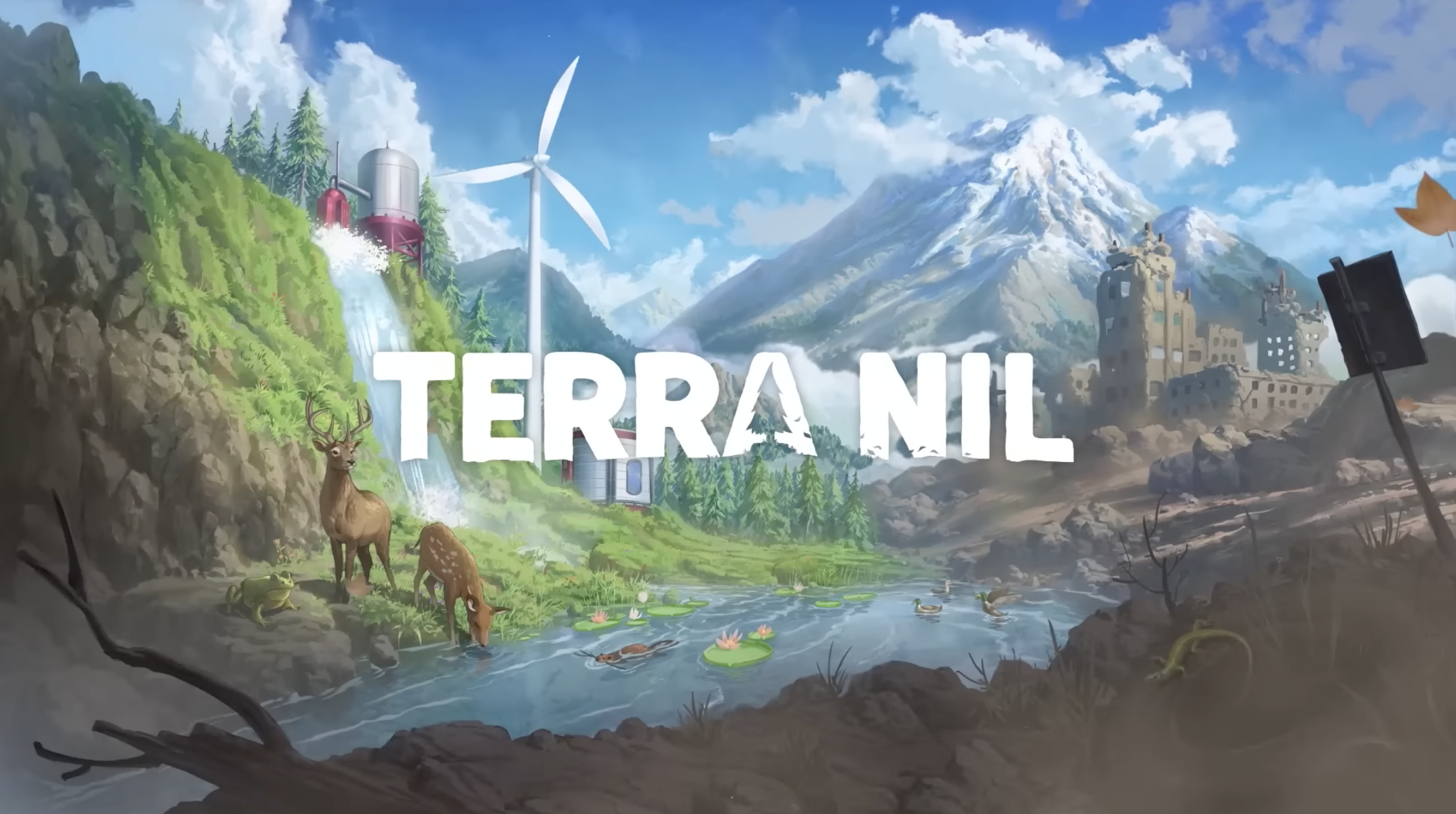Excerpt:
A new wave of game makers are attempting to influence a generation of environmentally conscious players. Will it work, and is it enough?
“It was scary. It made you realise how, despite all the sophistication of modern society, we’re still reliant on water falling from the sky.” Sam Alfred, the lead designer at Cape Town-based video game studio Free Lives, vividly remembers his city nearly running out of water. During 2018, the area surrounding South Africa’s second largest city suffered months of dwindling rainfall. Dams were unable to replenish themselves at the rate its inhabitants required. Water was rationed. Businesses shut. The situation even called for its own grim version of the Doomsday Clock: hour by hour, the city ticked ever closer to Day Zero, marking the end of its fresh water supply.
Terra Nil, the video game that Alfred has been developing since 2019, is a response to these terrifying events. Dubbed a “city-builder in reverse”, it foregoes the consumption and expansion of genre classics such as Civilisation and SimCity to paint a picture of environmental restoration. Starting with arid desert, it’s up to the player to rewild a landscape using various technologies – a toxin scrubber, for example, or a beehive. At light-speed, and with eye-massaging flushes of emerald green and azure blue, the environment transforms into lush vegetation. Terra Nil’s simplicity is as beautiful as its visuals, offering the satisfaction of a colouring book while doling out a clear-eyed critique of environment-wrecking extraction.
With Terra Nil’s story of “climate positivity”, Alfred is part of a burgeoning wave of game makers attempting to both educate players on the dangers of the climate crisis while stretching perceptions of what is possible in response to it. Niantic, the maker of Pokémon GO, has used the real-world setting of its augmented reality game to spearhead a tree-planting initiative. Ubisoft, meanwhile, staged an in-game climate march for Riders Republic players, and is set to unleash a virtual forest fire to demonstrate the devastating real-world effects of such arboreal disasters. The idea with each of these ventures is to use video games as tools of moral instruction.
For the past three years, a United Nations project called Playing for the Planet has catalysed these efforts with its annual Green Game Jam. Deborah Mensah-Bonsu, founder of partner organisation Games for Good and organiser of the jams, believes video games are perfectly placed to encourage changes in mindset and behaviour. “The idea of player agency is a really big piece [of the picture],” she says. “Within other mediums, it’s more of a passive experience. With games, you get to be part of a story – you have a say in its outcome.” She sees two sides to what the organisation is calling “green content.” On the one hand, “It’s trying to help players understand these different subjects.” On the other hand, it’s giving them “agency to take action.”
In the hidden object game June’s Journey and arcade fighter Brawlhalla, these actions amount to purchasing in-game items whose proceeds are then donated to environmental charities such as Ecologi. For deeper engagements with the brief, you have to look at titles such as snowsports utopia Riders Republic or another Ubisoft title, Anno 1800, the kind of grand city-builder that Terra Nil riffs on. Anno 1800’s ecological twist is an environment that reacts to the player’s expansionist actions. Creating monocultures depletes soil fertility, while overfishing destroys marine populations; each demand on the environment carries a consequence that could decide a city’s fate.
David Attenborough’s wonder for the natural world permeates the Horizon series, each immaculately rendered blade of grass or clump of moss a tiny act of veneration. And dark climate dread looms in the primordial landscapes of Death Stranding. However, there’s a dark contradiction at the heart of these blockbuster games: the very extraction that Terra Nil rallies against sustains players’ and the industry’s thirst for increasingly high-fidelity graphics. Every cutting-edge console, graphics card, and processor is the product of many carbon-intensive processes, including the mining of rare earth minerals…
Terra Nil | Official Game Trailer | Netflix (03-28-2023)
Revitalize a barren wasteland. Plant sprawling forests, purify soil and clean polluted oceans to turn a ravaged environment into an ecological paradise.









